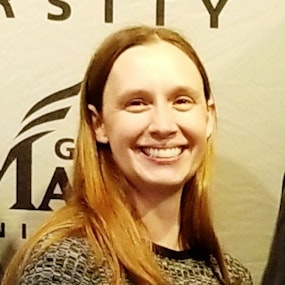ROBERT JOHNSON:
This is the award-winning Public Health Review Morning Edition for Thursday, October 19, 2023. I'm Robert Johnson. Now, today's news from the Association of State and Territorial Health Officials.
JENNIFER LYNCH:
Our administrator has mentioned before that we're seeing disasters that have broken records and rewritten history for countless communities.
JOHNSON:
Jennifer Lynch is with the Federal Emergency Management Agency. She says the frequency and intensity of natural disasters is changing the way planners think about emergency response.
LYNCH:
We are seeing an increase in recovery exercises, and so we're continuing to update the way we plan and conduct those exercises. There's a distinct effort around climate adaptation, an increase in integrating technology, like modeling and simulation which really increases the realism of the exercises. And then, definitely there is a huge focus, even with HSEEP and exercises in diversity, equity and inclusion.
JOHNSON:
Lynch reminds public health agencies that FEMA has a toolkit and other resources to help facilitate local training programs.
LYNCH:
So we have exercise starter kits, you can plan and manage an entire exercise using preparedness toolkits. And we have over 30 different five to ten minute long videos on the FEMA YouTube site. So, if you just Google HSEEP training videos it'll take you pretty much right to that website.
JOHNSON:
You also can click the link to the toolkit, look for it in the show notes.
A mentorship program that connects public health preparedness leaders with mentors is getting good reviews. Nathan Wormington leads this work in Alaska and was mentored by a senior preparedness official from another state.
NATHAN WORMINGTON:
It's very easy to get tunnel vision or to be in an echo chamber with the work that we do within the region or jurisdiction that we're currently employed. And so, this program has allowed me to engage with someone from a separate region with a significant amount of experience.
JOHNSON:
Wormington says the takeaways impact every aspect of his work in Alaska.
WORMINGTON:
It's broadened those collaborations, broadened those conversations, and it allows us to get a more holistic approach and viewpoint of what's going on nationwide.
JOHNSON:
Learn more about leadership programs like this one using the link in the show notes.
Also, today, public health has a role to play in the advancement and promotion of brain health. This is ASTHO Chief Medical Officer, Dr. Marcus Plescia.
MARCUS PLESCIA:
You know, I think in the past there's been a feeling of this is a clinical problem, there's limited treatments, there's limited preventive measures. But as the science has emerged, you know, it's pretty clear that there are things one can do to prevent the onset of cognitive impairment. And then when people have it, there are things that can be done now to slow it.
JOHNSON:
Plescia writes about Healthy Aging and Brain Health in a new ASTHO blog article that includes links to key resources. You can read the article and access the tools using the link in the show notes.
Finally, this morning, the FDA Food Code is updated often to ensure agencies responsible for retail food safety have the latest guidance. O'Keyla Cooper has that story.
O'KEYLA COOPER:
Learn about the impactful 2022 updates of the FDA Food Code and its role in shaping state and territory food safety regulations in a new ASTHO brief. Explore how jurisdictions can implement these guidelines and access a useful tool to monitor their application. For more in depth information, download the full brief, the link is in the show notes.
JOHNSON:
Before we go, we'd like to remind you to follow the newscast on your podcast player and ASTHO on social media. We're on LinkedIn, Twitter and Facebook.
That'll do it for today. We're back tomorrow morning with more ASTHO news and information. I'm Robert Johnson. You're listening to the award-winning Public Health Review Morning Edition. Have a great day.







